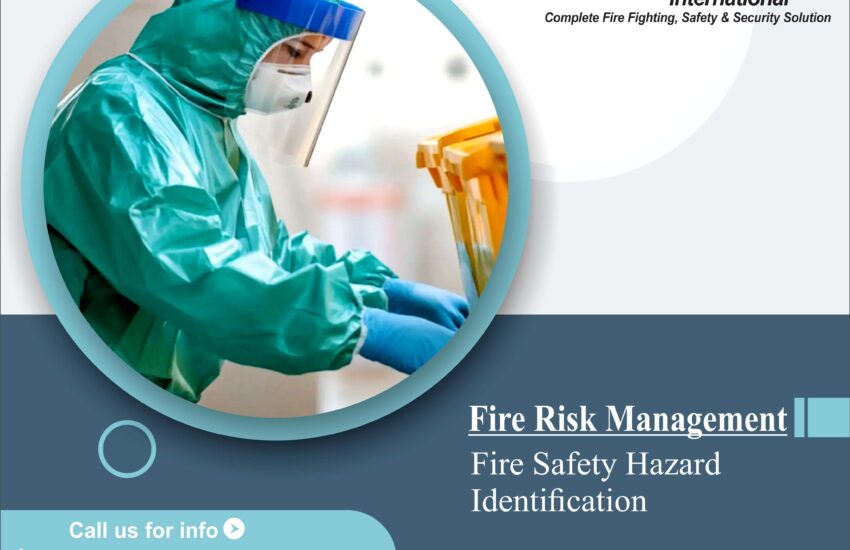Fire Safety Hazard Identification is a critical step in preventing fire-related incidents in any environment whether it’s a workplace, industrial facility, or residential area. Recognizing and mitigating fire hazards can save lives, protect property, and ensure compliance with local fire codes and regulations.
In this guide, we will explore the importance of fire safety hazard identification, common types of fire hazards, and how to implement an effective fire risk assessment plan.
📌 Keywords (for SEO):
fire safety hazard identification, fire hazard assessment, workplace fire safety, fire risk assessment, common fire hazards, fire safety checklist, fire prevention, fire safety in the workplace, home fire hazards, fire safety regulations, fire safety compliance, identifying fire hazards, fire safety training, fire protection systems, fire safety best practices
✅ What is Fire Safety Hazard Identification?
Fire safety hazard identification is the process of recognizing materials, activities, and conditions that can potentially cause a fire or contribute to its spread. It’s the foundation of any fire risk assessment and essential for developing a fire prevention strategy.
This process involves:
- Spotting combustible materials
- Identifying ignition sources
- Recognizing unsafe practices or faulty equipment
- Assessing emergency preparedness and fire protection systems
🔍 Why is Fire Hazard Identification Important?
Proper fire hazard identification helps:
- Prevent fire incidents by addressing hazards before they cause harm
- Protect employees and occupants
- Avoid legal penalties for non-compliance with fire safety regulations
- Reduce property damage and business interruption
- Ensure insurance compliance
🔥 Common Fire Hazards to Identify
Understanding the types of fire hazards is essential for creating a safe environment. Here are some common fire hazards you should identify and control:
1. Electrical Hazards
- Overloaded circuits
- Faulty wiring
- Damaged plugs and appliances
2. Flammable Materials
- Flammable liquids (e.g., gasoline, solvents)
- Paper, cardboard, and textiles
- Combustible dust in industrial settings
3. Heat Sources
- Space heaters
- Open flames
- Hot machinery
4. Human Error or Unsafe Behavior
- Smoking indoors
- Improper storage of flammable materials
- Blocking fire exits
5. Lack of Fire Safety Equipment
- Missing or non-functional fire extinguishers
- Inadequate smoke detectors
- Poorly maintained sprinkler systems
🛠️ How to Perform Fire Safety Hazard Identification
Follow these steps to ensure a thorough fire hazard identification process:
1. Conduct a Fire Risk Assessment
Start with a complete inspection of your premises. Use a fire safety checklist to evaluate all areas.
2. Involve Trained Personnel
Fire safety officers or trained staff can better recognize potential hazards.
3. Check Emergency Equipment
Inspect fire extinguishers, alarms, exit signs, and emergency lighting.
4. Review Housekeeping Practices
Clutter and poor waste management can quickly turn into fire hazards.
5. Evaluate Staff Training
Make sure everyone knows how to respond in case of a fire and where to find emergency exits.
📋 Fire Safety Checklist: Key Areas to Inspect
- Are fire exits clearly marked and unobstructed?
- Are fire extinguishers accessible and up to date?
- Are flammable materials properly stored?
- Are electrical systems regularly maintained?
- Are staff trained in fire safety procedures?
📘 Fire Safety Regulations and Compliance
Complying with fire safety regulations is mandatory. Depending on your location, this may include:
- OSHA (Occupational Safety and Health Administration) guidelines
- NFPA (National Fire Protection Association) standards
- Local building and fire codes
Regular fire audits and inspections ensure your facility stays compliant and safe.
🔄 Fire Hazard Mitigation: What to Do After Identification
Once hazards are identified:
- Eliminate unnecessary fire risks
- Control and isolate ignition sources
- Install or upgrade fire protection systems
- Educate staff on fire safety procedures
- Review the fire safety plan regularly
🧯 Fire Safety Training and Awareness
Training is a critical part of fire hazard identification and prevention. Ensure employees:
- Understand common fire hazards
- Know how to use fire extinguishers
- Can follow the evacuation plan
- Participate in regular fire drills
✅ Conclusion: Prioritize Fire Safety Hazard Identification
Ignoring fire hazards can have devastating consequences. Regular fire safety hazard identification not only protects people and property but also ensures compliance with legal and safety standards. Make it a routine part of your fire risk management strategy to create a safer environment for all.


